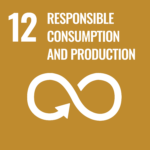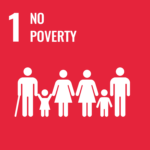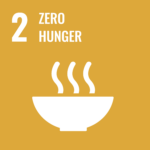Comparative Study of Green Ammonia in fertilizers
Application of the sustainable green ammonia from cattle manure, green ammonia and commercially available ammonia fertilizers for effective crop yield, nutrient retention and economic viability studies in Southern Africa.
Facts
- Country: Namibia
- Region Northern and Southern Region.
- Project abbreviation: NAM-002
- Project start / project end: June 2023 – April 2024
- Project budget: 80,336.00 NAD (appr. 10,000.00 €, currency exchange rate as of 30 April 2023)
- Donors: GIP AG
- Scholarship per person: Scholarship per Student: 2,354.00 NAD (appr. 684.00 €, currency exchange rate as of 30 April 2023)
- University: University of Namibia
- Local partner: Namibia National Students Organization (NANSO)
- Number of students: 5 students, 1 PhD student (1 female)
- Supervisor: Dr. Shafudah Natangue
- 3E4A-Coordinator: Contimi Kenfack
SDGs
Secondary SDGs
Primary SDGs
Donors
We thank GIP AG for their support!
GIP AG
Team
Simeon
Hamukoshi
Maria Ndalyewe Puyepawa
Nekandu
Syena Pendukeni Kresa
Paulus
Leonard
Tsheehama
George
Hamukoshi
Quarterly project updates
The five students just completed the first of four quarters of their research which aims to compare three different types of ammonia based fertilizers: fertilizer derived from cattle manure, from green hydrogen and commercially available fertilizer. The three fertilizers will be applied on tomato and potato crops to analyze their effectiveness. They also intend to work in parallel on the concept design of a reactor to produce green ammonia through the Haber-Bosch process.
In this first quarter, the students were able to start part of the planned field work. One of the three types of fertilizers they planned to test on potatoes and tomato crops were commercially available fertilizers. To achieve this, they secured a total of 84 plots with an area of 7 m2 each. On these plots, they were able to test two types of commercially available nitrogenous fertilizers on a total of 4 varieties of potato crops. Some crops were left untreated to serve as control. The experiment has been ongoing for several weeks now and the harvests and analysis results will be carried out in the upcoming quarters. The other two types of fertilizers (from cattle manure and from green hydrogen) will also be tested in the upcoming quarters.
As the students will be manufacturing ammonia-based fertilizers from cattle manure, an ammonia extractor to enable this is required. In this first quarter, the students have started taking the necessary steps to purchase the material and components for the installment of such an ammonia extractor. Here they have faced some minor delay regarding the delivery of relevant components. As all components are currently underway, they are working on the installation of the extractor and will be ready to put it to use during the next quarter.
This project also aims to carry out a study to examine the economic viability of green ammonia-based fertilizers in Namibia. For this the students started a feasibility study to explore sustainable and economically viable farming practices using green ammonia-based fertilizers produced from cattle manure, commercial fertilizers, and green hydrogen. The goal is to provide valuable insights to policymakers, farmers, and the agro-industry for implementing more sustainable and effective farming practices. For this in-depth feasibility study, the students have chosen to include field experiments, surveys, and stakeholder interviews with farmers, policymakers, and agricultural experts. Data collection instruments will include structured questionnaires and semi-structured interview guides. Now that the approach and concept for the feasibility study have been established, they will be going into the field in the next quarter for the data collection phase.
An important part of the project is the concept design for a reactor to produce green ammonia through the Haber-Bosch process. In this first quarter the students have started doing the necessary research and contacting the relevant experts as they work on this design. One challenge the students are facing here is the unavailability of certain components in Namibia and Southern Africa as a whole. We are in constant communication with them to provide the necessary support. There will be more progress made in this area as they move into the next quarter.
The implementation of the first quarter was overall very successful. Except for some minor issues regarding availability of some components, all activities could be carried out as planned. The second quarter will be the most important quarter as it contains the largest part of the field work. The students are excited and looking forward to the next phase of the research project.
The second quarter was an eventful one for the students. They were able to make significant progress with their research goals.
One very important activity for the second quarter was to finalize the set-up of the ammonia extractor. After carrying out an inventory and the purchase of all necessary material and components for such an ammonia extractor in the first quarter, the parts were finally delivered to the students at the beginning of this second quarter. They were able to build up and install the ammonia extractor which will enable them to extract “green” ammonia from cattle and goat manure which they will subsequently convert to ammonium-based fertilizers. This newly manufactured ammonium-based fertilizers from cattle and goat manure will then be tested on crops during the subsequent quarters. The student team has high expectations for the success of this experiment and anticipate favorable results.
As this project also aims to carry out a study to examine the economic viability of green ammonia-based fertilizers in Namibia, a feasibility study to explore sustainable and economically viable farming practices using green ammonia-based fertilizers produced from cattle manure and from commercial fertilizers was an integral part of the research. This study aimed to assess the viability of green ammonia-based fertilizers, manage associated risks, and provide guidance for sustainable decision-making. In this second quarter, the students were able to finalize the feasibility study which targeted the Omusati region in northern Namibia. In the course of this feasibility study, a qualitative methodology was employed and over 27 agricultural experts were engaged. The findings revealed a preference for commercially available fertilizers due to the perceived soil quality benefits. Very limited general awareness on environmentally friendly alternatives such as the sustainably produced ammonia-based fertilizers was also observed. Moreover, high cost emerged as a significant barrier to the adoption of green ammonia-based fertilizers. The study recommends promoting the adoption of ammonia-containing green fertilizers through various strategies within the Omusati region, Namibia. Comprehensive educational initiatives are suggested to bridge the knowledge gap. Moreover, advocating for policy measures to mitigate fertilizer costs is deemed crucial to optimize fertilizer benefits and promote sustainable agricultural practices in the Omusati region. As this study targeted mainly the northern part of Namibia encompassing small-scale farmers and government green scheme projects, the students are looking forward to carrying out a similar feasibility study in other regions of the country particularly involving commercial farmers over the next upcoming quarters to get a more broad and holistic view on the issue.
After having planted the four types of potatoes in the first quarter, the students applied 0.12 kg of fertilizer per plant, aiming to understand growth patterns and yields within a 17-day post-planting period. The objective here is to optimize potato production by identifying the most effective fertilizer type and concentration. The experiment includes 84 plots in three replications, each accommodating 34 plants. As the students approach the third quarter, accurate data collection during harvesting will be crucial to evaluate fertilizer impact. Key parameters such as growth attributes, nitrogen use efficiency, leaf area index, biomass, and yield attributes will be recorded and discussed in a thesis format, with potential publications derived from the findings. The data will be compared to renewable and green ammonium fertilizers to determine appropriateness.
Last but not least, the team has made some progress on the conceptualization of a green ammonia benchtop production reactor, outlining the essential components that can be procured and commissioned for actual production in the country. The research focus revolves around optimizing the reactor component of the Haber-Bosch process. More on this to come over the next quarters.
The activities of the third quarter were far-reaching and built on outcomes of the previous quarter. The students keep making progress and move closer to their objectives
After setting up the ammonia extractor in the second quarter to extract ammonia from animal manure, the team began using the extractor in the third quarter. They successfully converted cattle manure into renewable ammonium sulfate crystals. These crystals will now be sent to an external laboratory for analysis, where various parameters such as nitrogen content, toxicity, melting points and solubility will be examined. Students are confident that the compound will be identified as ammonium sulfate. After this analysis, the compound is integrated into fertilizers and tests are carried out on tomatoes and potatoes. Expectations are high that the fertilizer will outperform the higher raw manure and increase
Wie im Update für das letzte Quartal beschrieben, führten die Studenten eine Machbarkeitsstudie in der Region Omusati durch, um das Potenzial von grünen Ammoniakdüngern zu bewerten und Leitlinien für nachhaltige Entscheidungen bereitzustellen. Die Studie ergab, dass Landwirte aufgrund der geringeren Kosten, der wahrgenommenen Vorteile für den Boden und des begrenzten Bewusstseins für Alternativen kommerzielle Düngemittel bevorzugen. Aufbauend auf den Ergebnissen des letzten Quartals wurde die Studie nun um vier weitere Regionen erweitert: Kunene, Otjozondjupa, Kavango und Omaheke, die eine umfassende namibische Perspektive bieten. Die Studie beauftragte lokale Beratungsunternehmen mit der landesweiten Kontaktaufnahme mit Landwirten und berücksichtigte Lieferantenperspektiven, die das Verständnis wirtschaftlicher Faktoren verbesserten. Laufende Diskussionen prägen die Vervollständigung der Ergebnisse und bieten Einblicke in die wirtschaftlichen Aspekte grüner Ammoniakdünger in Namibia. Alle aus der Machbarkeitsstudie gesammelten Daten und Informationen werden in einem Manuskript zusammengefasst. Basierend auf den Ergebnissen der Studien planen die Studierenden, Bildungsinitiativen zu starten und sich für politische Maßnahmen zur Senkung der Düngemittelkosten und zur Förderung der Nachhaltigkeit in ausgewählten Regionen einzusetzen.
During the field trial, various fertilizers (vermicompost, control fertilizer, cattle manure and NPK fertilizer) were applied to potato crops in different concentrations. In the third quarter, the team found that vermicompost outperformed the other fertilizer types. The highest yield was achieved with the application of vermicompost, which is consistent with the results of other published studies. Vermicompost not only provides micronutrients, but also introduces beneficial soil bacteria, plant growth hormones and enzymes. This research provides valuable insights into sustainable agricultural practices and highlights the potential of organic alternatives such as vermicompost to improve crop yield and soil health.
Last but not least, the Haber-Bosch reactor design to derive ammonia from green hydrogen is ongoing. The team has investigated the application of various catalysts to lower energy requirements of the reactor. Accordingly, they successfully completed the standard concept design for green ammonia production, covering plant design, operating conditions, input stoichiometry, catalysis, and associated costs. Their next focus is on the effectiveness of catalysts and their impact on temperature conditions and production costs.

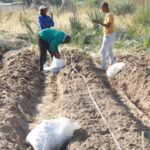
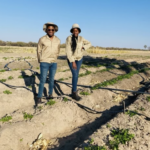
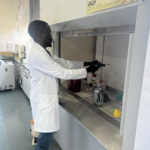
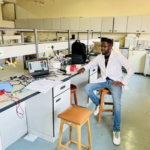

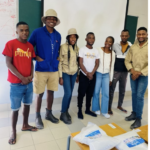

Scientific Report
View scientific report here


